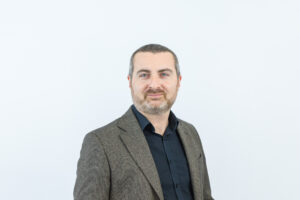Nanoelec’s Characterization program is part of the institute’s digital trust offering for the serenity and sovereignty of the digital transition. Ennio Capria, Program Director, sheds light on the issues of 2022.

Ennio Capria, Deputy Head of Business Development at ESRF and Director of Nanoelec/Carac program © P. Jayet/CEA
Through the Nanoelec/Characterization program, industrial firms and researchers have access to topnotch tools to assess the quality of their products and processes and study the effects of ionizing radiation on components and systems. Thanks to the high penetrating power of neutrons and X-rays, these evaluations can be performed non destructively, without the need for opening or damaging the objects, and in many cases maintaining its functionality.
The year 2022 brought a renewed and revitalized commitment from the program partners. They are undertaking extensive and diverse research and development efforts focused on radiation hardness testing for electronic components, failure analysis and advanced physical-chemical characterization. Notably, this year marked the first dedicated utilization of correlative microscopy, employed to explore different substrate families. Since 2022, the teams involved in the Characterization program have been heavily engaged in three European projects related to nanotechnologies and the irradiation of electronic components.
In 2022, the activity of the CEA team participating in the Nanoelec/Characterization program was concentrated on preparing and executing a multi-scale correlative analysis project for detailed inspections of semiconductor materials. In collaboration with an industrial partner of the program, they developed a workflow to analyze some unique characteristics of crystalline defects in SiC, ranging from the scale of the wafer to sub-micrometric lateral resolution.
In parallel, at the ESRF, two different teams, in collaboration with two innovating SMEs and the partners of the program, pursued some further development of correlative microscopy methods. An XRD/Raman correlative microscopy station has been installed on the ESRF/ID01 beamline, and on BM05, an instrument capable of mapping both crystalline and electronic defects in materials has been successfully implemented.




